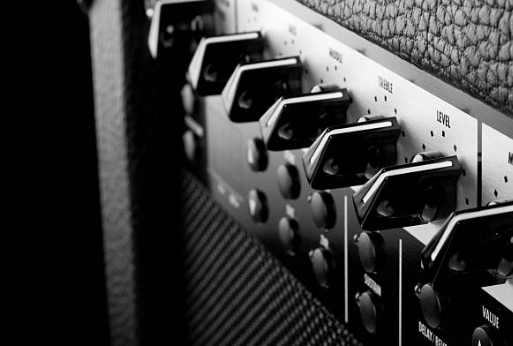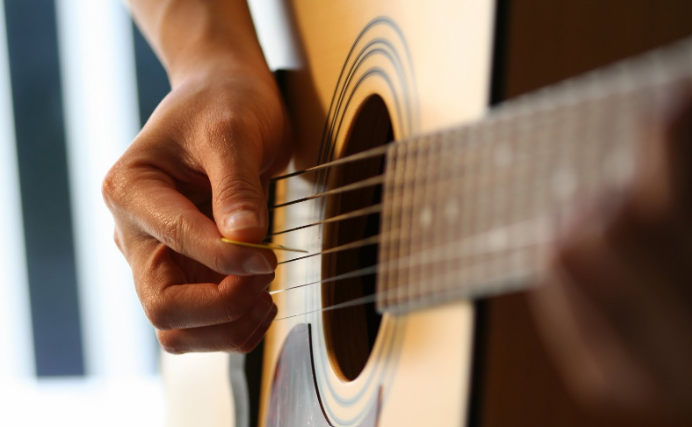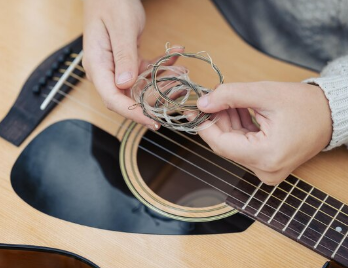Intervals: An Essential in Music Theory – Easy Guide

As a guitarist, you’ve probably heard about scales, chords, and maybe even modes—but have you ever stopped to think about the building blocks behind them all? That’s where intervals come in.
Understanding intervals is one of the most important (and often overlooked) steps in becoming a well-rounded musician. Whether you’re writing your own music, improvising a solo, or trying to figure out why certain chords sound so good together, intervals are the secret ingredient that ties it all together.
Let’s dig into what intervals are and why they’re so essential for guitarists.
What Are Intervals?
An interval is simply the distance between two musical notes.
That’s it!
If you play a C note and then play an E note, the distance between those two notes is called a major third. If you play a C and a G, that’s a perfect fifth. Each pair of notes creates a unique sound and emotional quality—happy, sad, tense, stable, or dissonant.
On the guitar, intervals are especially visual. You can see and feel the distance between two notes on the fretboard. For example:
- A perfect fifth is often five frets apart on the same string.
- A major third can be found two frets over and one string down.
When you start recognizing these patterns, your fretboard becomes a map—not just a bunch of dots.
Intervals Shape Chords
Every chord you play is built from intervals.
Let’s take a look at a basic C major chord. It includes three notes:
- C (the root)
- E (a major third above C)
- G (a perfect fifth above C)
Together, those intervals form a major triad.
Now let’s switch it up: if we lower the E to an E♭, that interval becomes a minor third—and now the chord becomes C minor.
That one small change completely alters the mood of the chord. And that change is an interval.
Understanding this gives you the power to:
- Build your own chords from scratch
- Modify chords on the fly
- Recognize chord shapes by ear
- Understand chord progressions deeply
Knowing intervals is like getting X-ray vision for music—it lets you see what’s inside the chord, not just what it looks like on a chord chart.
Intervals Create Melody
Every melody you’ve ever heard is just a series of intervals.
Think about the melody to “Happy Birthday.” The notes rise and fall in specific steps—those steps are intervals.
When you’re improvising a solo or writing a riff, the emotional impact comes from the intervallic choices you make. A half-step (minor second) sounds tense and dramatic. A whole-step (major second) sounds smooth and lyrical. A jump of a perfect fourth feels bold and declarative.
When you know your intervals:
- You can intentionally create emotion in your solos
- You’ll be able to play melodies by ear faster
- Your phrasing becomes more expressive and musical
Training Your Ear With Intervals
Ear training is one of the fastest ways to level up as a guitarist—and intervals are the foundation.
When you can hear the difference between a major third and a perfect fifth, or recognize a tritone when it sneaks into a song, you’re developing the same skills that pro musicians use to transcribe music, harmonize, and improvise fluently.
A great place to start is by learning interval songs:
- Perfect Fourth – “Here Comes the Bride”
- Major Third – “When the Saints Go Marching In”
- Minor Third – “Greensleeves”
- Tritone – “The Simpsons Theme”
These reference points help your ear associate each interval with a familiar sound. Over time, you’ll start to hear intervals naturally—and that’s when your playing takes a big leap forward.
How to Practice Intervals on Guitar
Here are a few practical ways to get started:
- Play single-string intervals: Pick a note, then move up the string to find other intervals (e.g., 2 frets = major second, 4 frets = major third).
- Visualize shapes across strings: Learn how intervals look on different string combinations—this improves your chord and scale knowledge fast.
- Play intervals in scales: Practice playing scales in thirds, fourths, or sixths to internalize how intervals move within a scale.
- Build chords from intervals: Instead of relying on chord charts, try building chords using interval formulas like 1–b3–5 for minor or 1–3–5–7 for major 7th.
Wrapping Up
Understanding intervals is like unlocking the grammar of music. Once you get it, you can speak the language instead of just memorizing phrases. It improves your technique, creativity, improvisation, and ear training—all at once.
So next time you pick up your guitar, don’t just think in shapes or patterns. Start thinking in intervals. They’re the hidden code behind every riff, chord, and solo you love.
And the best part? Once you learn them, they’re with you for life.
Do you want to take your playing to the next level? Start learning intervals today—and watch your entire guitar world open up.
Interested in taking your guitar skills to the next level? Click below and book a free lesson with us! We’re committed to helping you express yourself freely on the guitar without endless scales and theory.
Author: Daniel Powers Jr, the founder of Real Brave™, serves as the chief inspiration to thousands of students in the Real Brave music instruction program. He’s also the visionary behind PracticePad™, an online platform for live one-on-one online music lessons, lesson tracking, and scheduling. Beyond his entrepreneurial pursuits, Daniel leads a non-profit organization that provides formerly homeless children with access to music education, making a profound impact on their lives. His unwavering dedication to music, innovation, and education continues to inspire individuals to reach their fullest potential while creating positive change in communities. Follow Real Brave on all the socials:
youtube.com/@realbraveinc
twitter.com/realbraveinc
https://www.tiktok.com/@realbraveinc
instagram.com/realbraveaudio
facebook.com/realbraveinc






